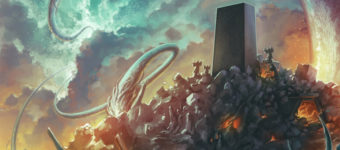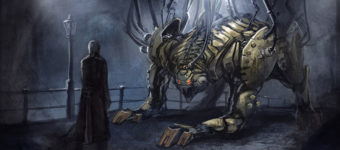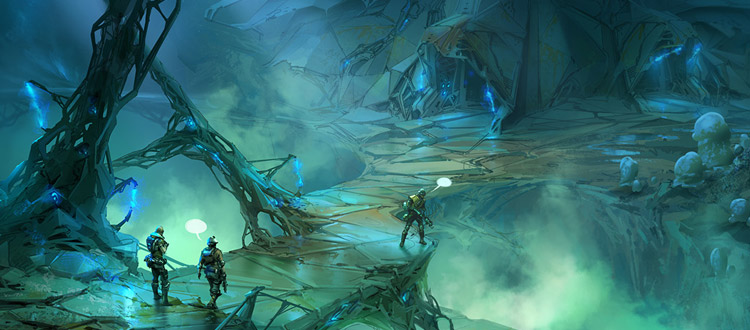
Concept Artist Hethe Srodawa On Working & Thriving In The Entertainment Industry
Hethe Srodawa is an incredible artist who made his dream of becoming a concept artist into a reality.
He’s worked on major game projects like Grand Theft Auto V, Red Dead Redemption, and Max Payne 3(among many others).
He’s a skilled craftsman with a talent for designing entire worlds that feel true to their original creative goals. He’s worked as a concept artist & helped with art direction so he’s got a broad perspective on the video game industry.
This interview offers a peek into Hethe’s incredible art career, his advice for aspiring artists, and his brilliant creative process.
What are some of your earliest memories drawing & when did you start taking art seriously as a possible career?
I have memories of making and loving art as far back as I can remember.
Things like cartoons and storybooks really captured me from the start. A lot of kids draw when they’re young but I drew a lot!
And I was often making things with those drawings.
Sometimes it was a storybook, sometimes paper doll like characters with costumes and props to use. I even have a memory of taking that old printer paper that’s connected and drawing out a few ‘movies’.

I’d present them to my family by having them sit behind a couch. I’d go around the other side and lower my movie frames down the backside narrating the story as it passed in front of them.
I have this old book with questions you answer about yourself that I filled out when I was six, and in answer to “What do you want to be when you grow up?” I answered that I wanted to be an artist. So the drive to do this full time started young.
I have some aunts and uncles that are career artists, things like fine artists and architects, so the idea of art as a job was not new to my family.
Did you study art in school or are you fully self-taught? Do you think artists today would benefit from art school or is it possible to teach yourself drawing & painting online?
I studied graphic design in college, learning the art of text and picture layout for print and web.
As a young kid and all through high school I took art classes wherever I could. So I took whatever school offered and when those classes were used up I worked with the art teacher to get credit for ‘self-directed’ art classes under her supervision.
In addition to this my parents put me in various private art classes from time to time. I took classes on observational drawing, cartooning, comic book making and some figure drawing in high school.
Despite all these classes and a degree in art I received very little relevant instruction. But from a young age I learned to absorb and apply on my own.
My ‘self-teaching’ was to study art books or comic books, copy what I saw and then apply it for my own stuff.
So having said all that, as a working artist a degree never matters.
What matters is that you make good art and getting to that point has many paths.
The right type of teaching and mentorship will help dramatically and accelerate your learning, perhaps even establish good habits before bad ones set in. But schools don’t guarantee that, as many of us have learned.
I would say that the first time I was properly taught was on the job at Rockstar Games. The artists that actually taught me or shaped me directly on a daily basis were Steven Olds, David Hong, Daren Bader, Ian McQue, Jason Castagna, Shelly Wan and Raul Cabrales.
Working alongside them accelerated my art growth one hundred fold.
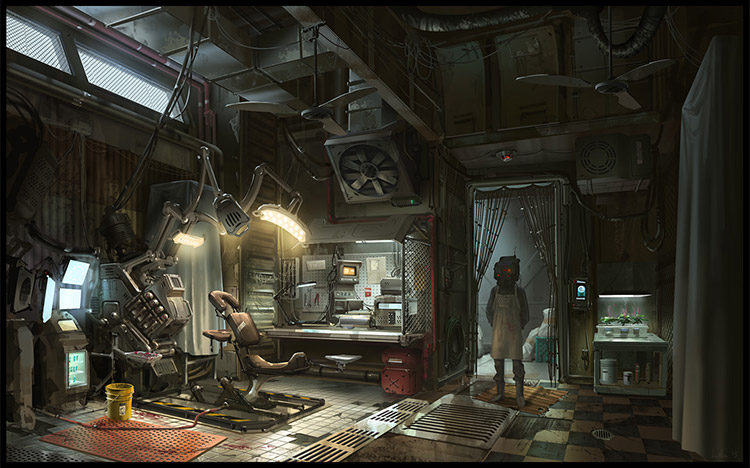
What are some common mistakes you made when first starting as an artist on your first job & how much have you improved since then?
The first thing that comes to mind was my limited use of studying reference.
I jumped into that hard core my first day at Rockstar. Without reference my old work felt ungrounded and immature in comparison. I also had too narrow a window of inspiration into my work and my coworkers broadened my horizon with new artists to look at and new ways of thinking about picture making.
Even with all the drawing I did while growing up I was still severely lacking in foundational drawing and painting skills. Those really got worked on while at Rockstar.
You’ve worked on some big hits like GTA V and L.A. Noir. What’s the workflow with larger studios? How many artists do you work with and what’s the creative pipeline?
I haven’t seen a typical workflow that larger studios share. Every studio seems to have its own culture and process, and studio leaders have different goals and priorities.
In addition to culture and priorities the games themselves differ widely. And that affects how studios make them.
For example, making a linear single player experience is very different than making an open world game or making an arena shooter.
As a concept artist my work starts near the beginning of the process. Sometimes I’ll be the first step in the process and sometimes I come in after game designers have already built a foundation.
My personal preference, which we did on some projects at Rockstar, is to paint a broad foundation up front that game designers and 3D artists use to rough in a playable game world.
From there the concept team follows through iterating over what gets put in the game helping shepherd the final product to an end result that maintains the spirit of the first vision.
The size of the art teams I’ve worked with varies from dozens to hundreds. But the concept and art direction team is always fairly small, somewhere between eight and fifteen people guiding the vision.
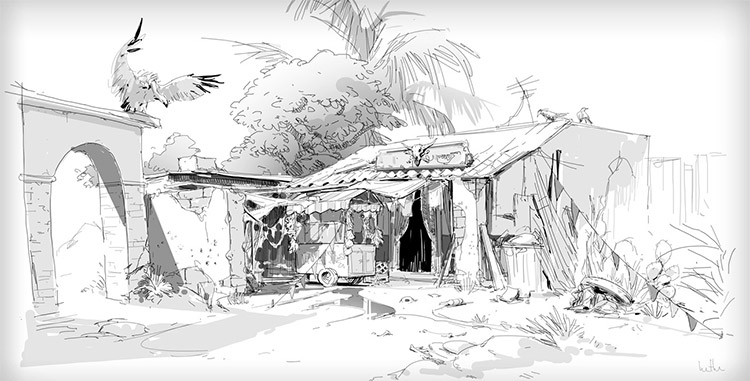
What was your experience like working at Rockstar Games? What was the creative environment like and how big was their team?
Working at Rockstar was both the best of times and the worst of times. I’ll leave it at that.
For someone in my role the creative environment was great. We had clear direction and also lots of freedom to work within that and to do our best work.
We were expected to function as art directors and follow our designs through production helping the 3D artists achieve the desired result. Believability, a sense that the fictional world we were creating was real was our primary goal.
I worked with very skilled art directors and learned a great deal about crafting worlds from them.
Do you have any tools or programs you use almost daily for you work?
My tools are pretty simple.
I use a Cintiq with Photoshop and of course a build of whatever game I’m working on, as I often do environment design over primitive geometry built out by the game designers.
I like a good image viewer like IrFanView for my reference. Also a sketchbook or notebook nearby is handy.
Can you describe your creative process when designing a new piece? For example, how do you create a new character design from start to finish?
Well a character design starts from a written or verbal description I’m given.
From there I gather reference and in that search I look for my foundation.
Most of the designing happens in my head as I gather images and think the character through. Once I have a solid idea I draw it out. Sometimes I’ll share a sketch for approval and sometimes I paint it to completion and then present it.
That depends on who’s going to review it and what they prefer.

At some point the design is approved and I finish any remaining details, perhaps flesh out the character with a back view or with break away sketches that illustrate something not quite visible in the base design.
The 3D modeler is given my final concepts along with the relevant references I gathered and any notes I’ve made.
How important is it to meet the right people to land a job as a concept artist? Do you have any networking tips for artists who want to break into the industry?
I suppose meeting the right people is how you get a job, but all you need to do to meet them is apply to a job listing or reach out on LinkedIn or some other social media channel.
Now, once you’ve worked with people and made a good impression things can get easier.
When new projects are started most of us prefer to work with someone who not only has good work but also someone we know we work well with, someone who makes the process easier and not harder.
So people tend to stick together in some fashion, rehiring people that have proven themselves.
It’s best to start by having an internet presence, sharing your work often and asking those who might hire what they think of your work.
How important is life drawing for concept art? Do you think drawing from life is a requirement to develop a solid concept art portfolio?
There’s something special about life drawing or painting because you can find answers to your questions simply by moving around and getting a different perspective.
Because the thing you are studying is right in front of you there is more information available to you. In some situations you can move lights, or change the mood or have your subject move around.
That said: I think you can learn vast amounts, enough to get by, from pictures.
It’s slower for foundational work but becomes essential as a professional because you simply won’t have access to the places and things you need to draw.
So can you get by without life drawing? Probably. But why limit your learning and make it harder?
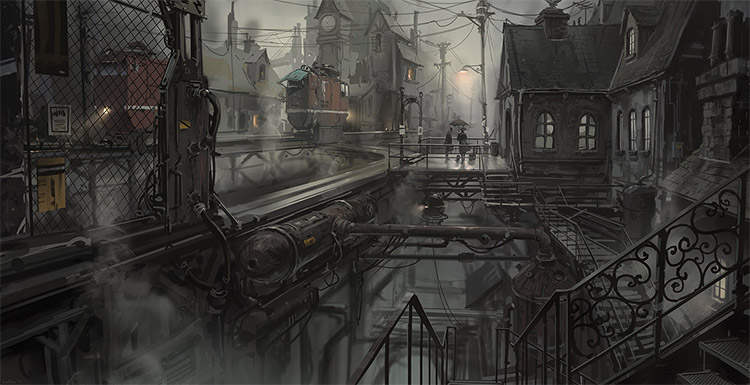
Is it better to start as a concept artist freelancing or to get a studio job?
My advice would be to get a studio job early on so that you’re surrounded by teachers.
You will learn extraordinarily fast in the right setting.
What is your favorite type of production artwork to create & why?
I love it all. At heart I am a world builder, sort of like a comic book artist, someone who wants to flesh out an entire world and everything in it.
If I really had to pick a favorite assignment it would be pitch concepts or illustrations that sell a big idea so you get a sense of the place and the characters and the story all at once.
But I also love to break things down and design them out.
What do you like to do for fun in your free time to relax & where do you find inspiration for your artwork when you’re not drawing?
I socialize a lot with family and friends. I like to read. I like a good movie.
I love looking through art and I love making personal art. I find inspiration everywhere.
That’s just how it is for artists. I think we’re all the same in that way.
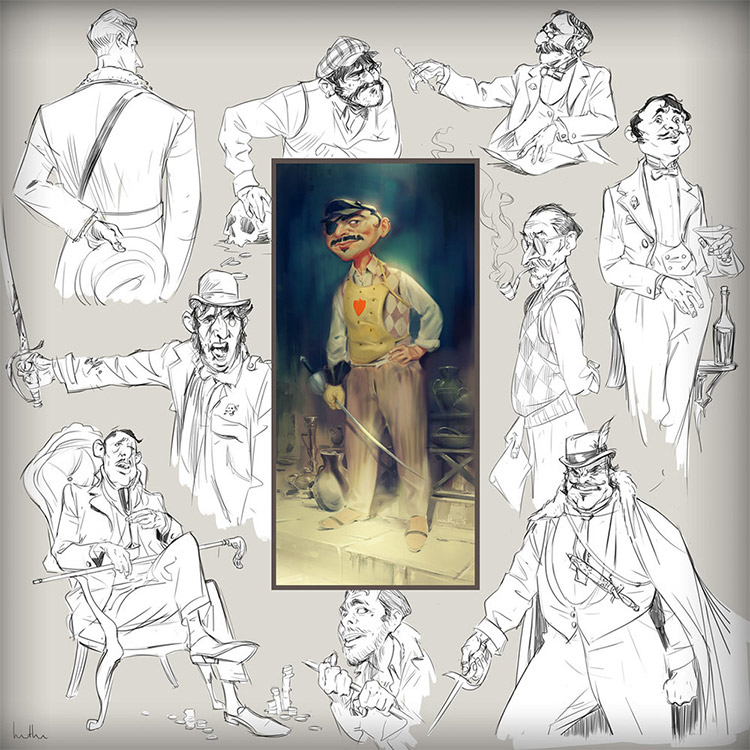
Any final advice can you share for aspiring concept artists looking to break into the entertainment industry?
If you want to do this for a living then get really good at drawing, painting & designing.
That’s the job and this is a professional field.
A lot of people try to break in without the skills. So get the skills. Approach learning like a full time job.
When you are young put in as much work as you can. When I started at Rockstar and saw I was behind the curve, I spent most evenings after the family went to bed working on my weak spots.
Whatever weakness came to light during the day’s work I would tackle at night for weeks or months at a time until I’d figured it out or made improvements. Then some other weakness would become my obsession and so on. It was lots of work but I needed it.
Very special thanks to Hethe for making the time for this interview. Anyone who’s curious about the concept art field or game art in general should bookmark this for another read!
If you want to see more you can find Hethe on ArtStation or dig around his portfolio site.
He also shares work on his social accounts like Facebook and Twitter @hethesrodawa.



![Best 3ds Max Tutorials For [year]: Teach Yourself Modeling & Animation 3d planets lowpoly](https://cdn.conceptartempire.com/images/09/6191/00-featured-3dsmax-340x150.jpg)
